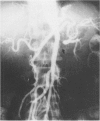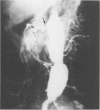Abstract
Assessment of the predictive value of preoperative factors in the determination of operative risk in 50 patients who underwent simultaneous aortic and renovascular procedures over a 10-year period is reported. There were six operative mortalities (12%). Factors associated with increased mortal risk were azotemia (43% vs. 7%), associated complex renal or visceral procedures (31% vs. 5%), treatment of aortic aneurysm vs. occlusive disease (17% vs. 5%), positive EKG (19% vs. 4%), age over 60 years (20% vs. 4%), and a history of diffuse peripheral vascular disease (18% vs. 7%). None of these differences, by themselves, had statistical significance. Through discriminate analysis with assignment of weighted scores to the five most powerful predictors of operative death (complex procedure--4, azotemia--4, aortic aneurysm repair--3, positive electrocardiogram--2, history of diffuse vascular disease--2), a weighted score of greater than or equal to 10 predicted operative death with an 83% sensitivity and 93% specificity (p = 0.003). Although advanced age, diabetes, severity of hypertension, and history of heart disease were associated with increased operative risk, they contributed minimal discriminate value to that provided by the preceding five variables. This was because these weaker risk factors were usually found in association with the predictors in the discriminant score. This study suggests that in patients with high weighted discriminant scores (greater than or equal to 10), consideration of operative risk is particularly important in evaluation of the proposed value of combined procedures.
Full text
PDF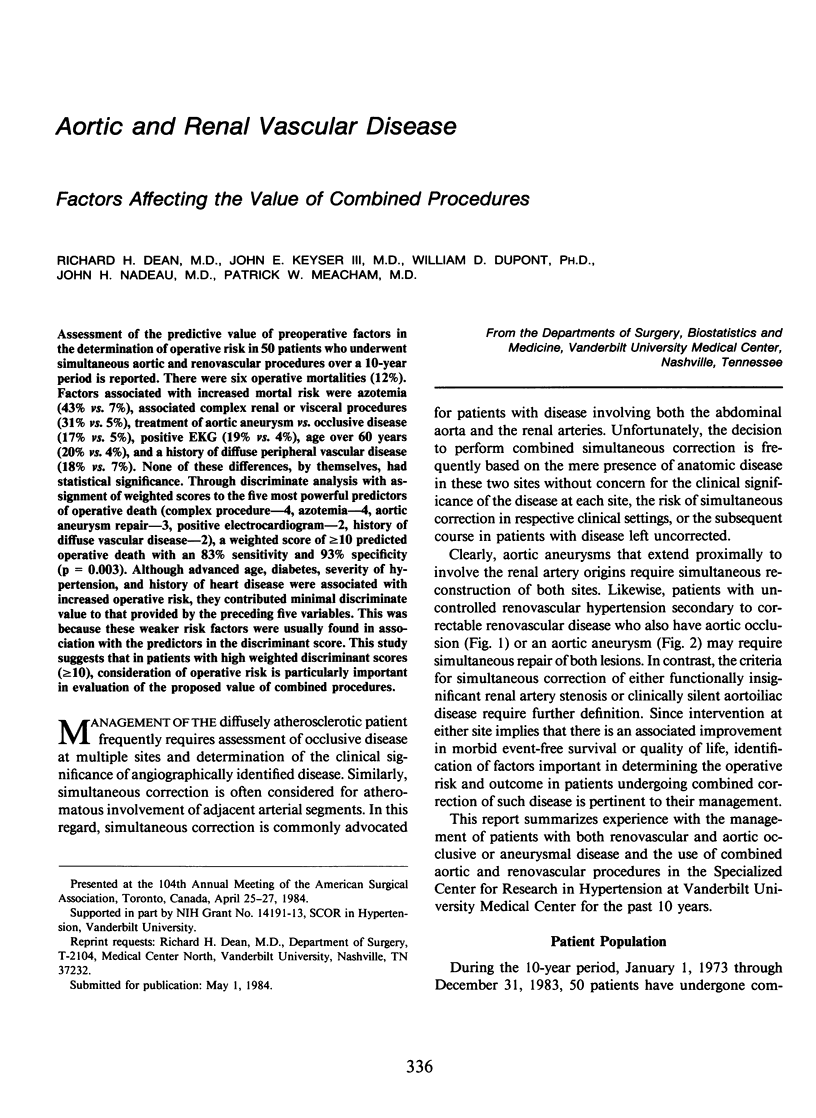
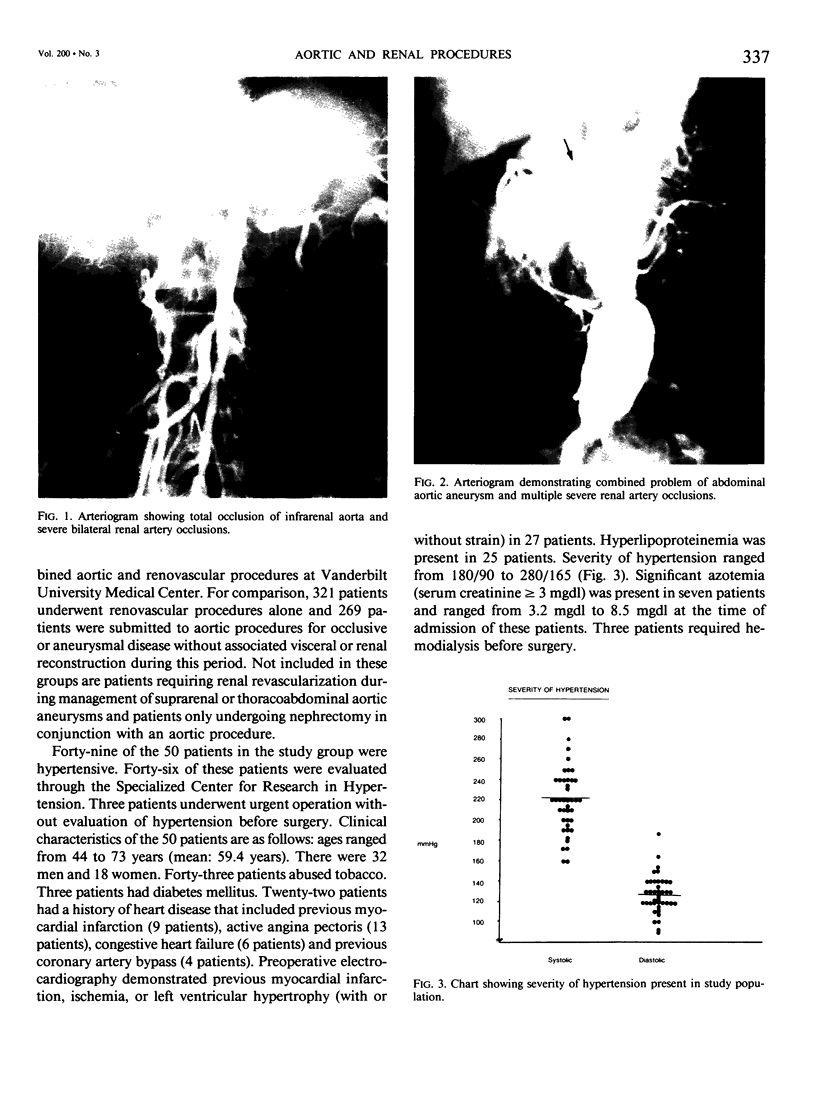
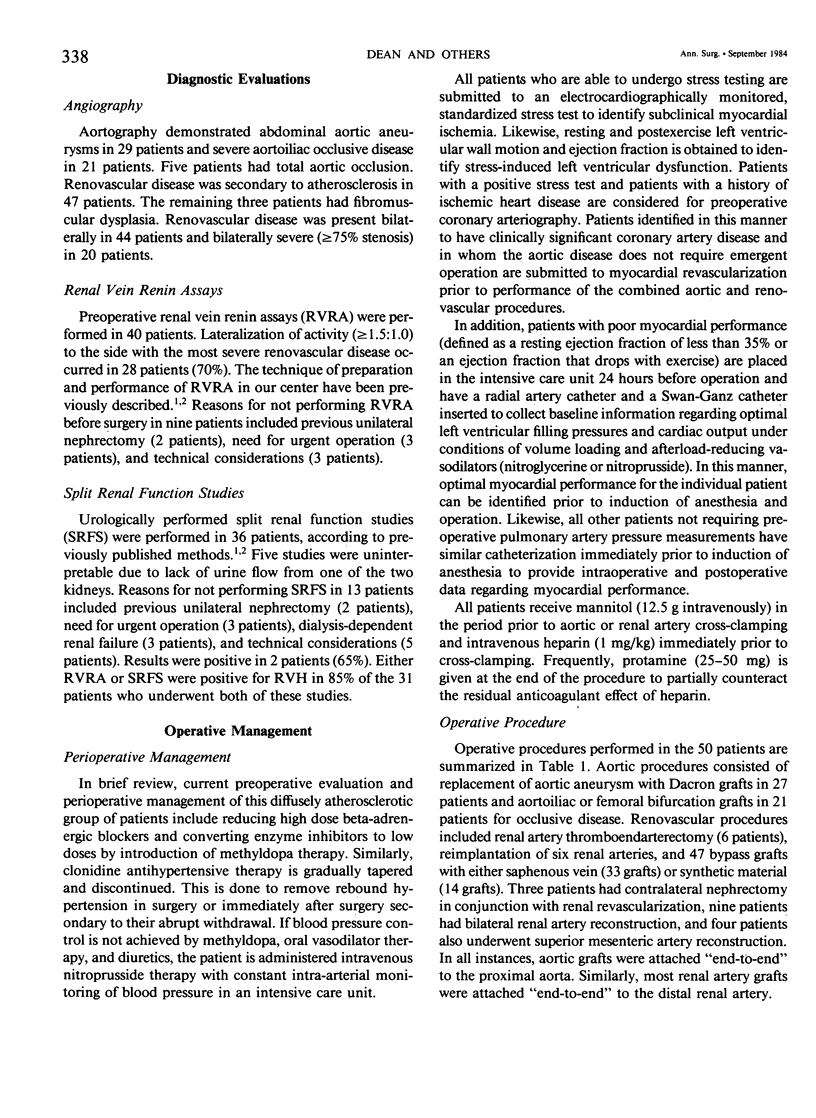
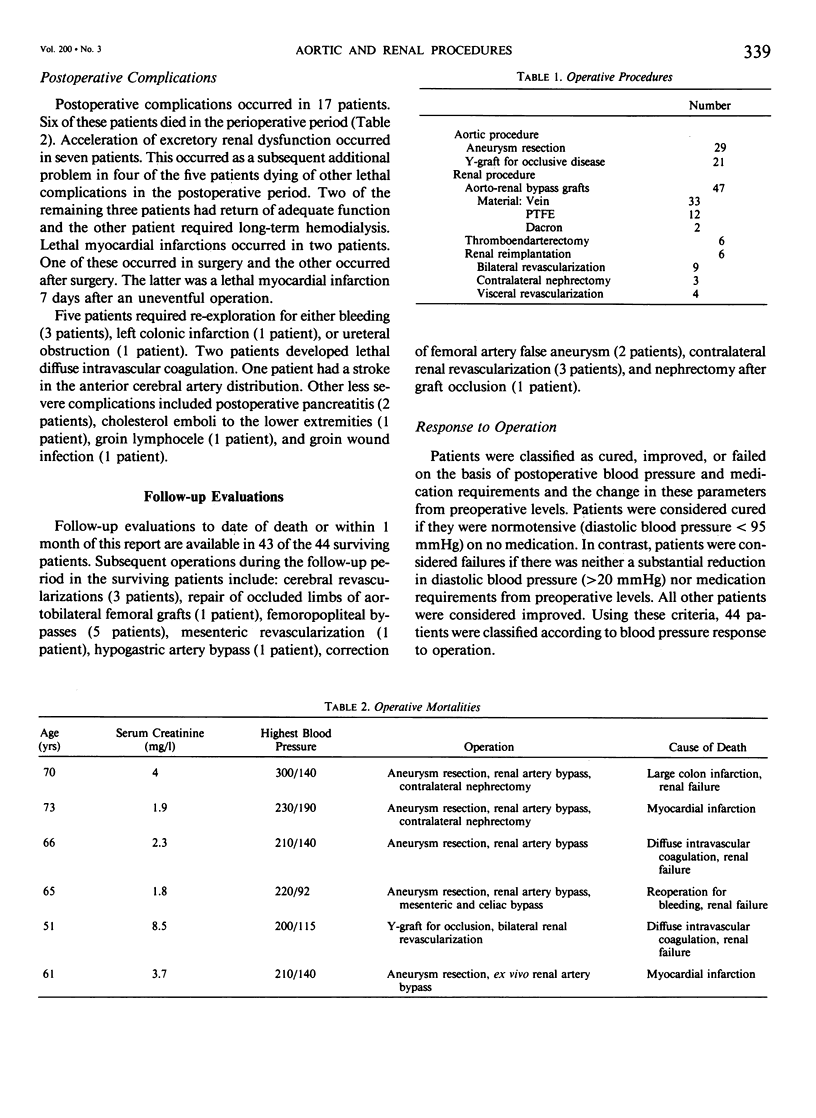
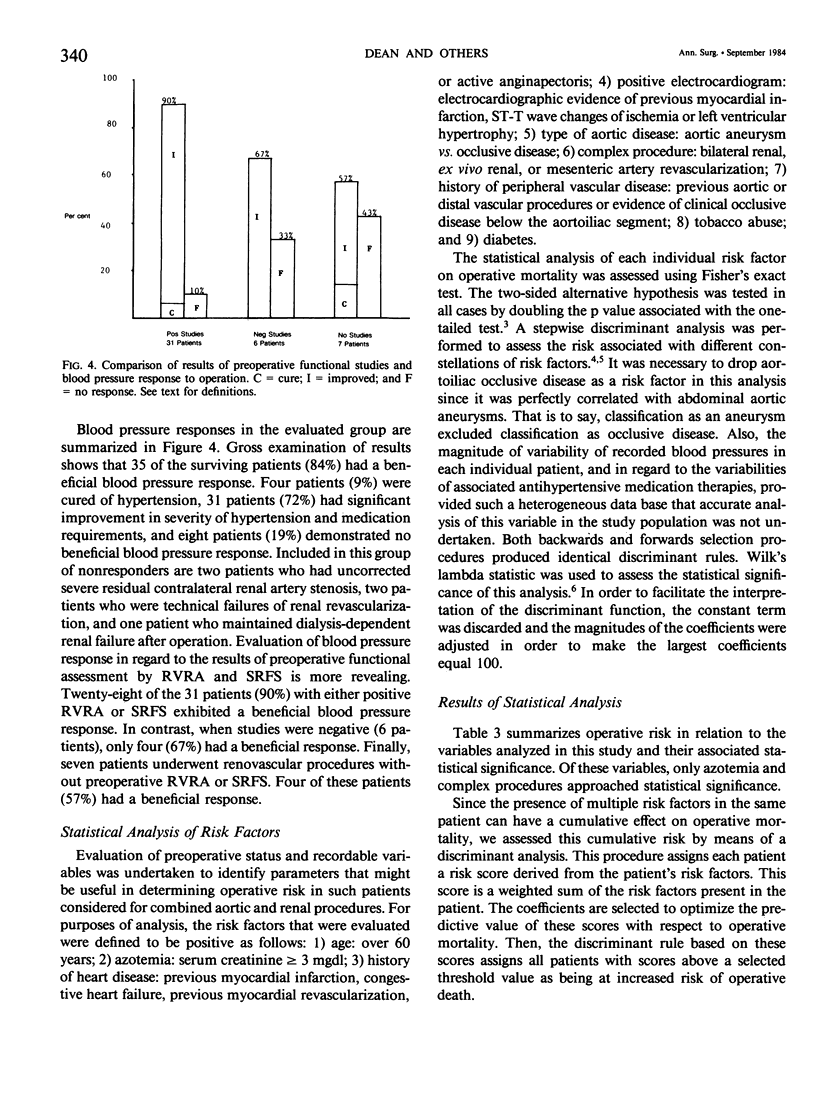
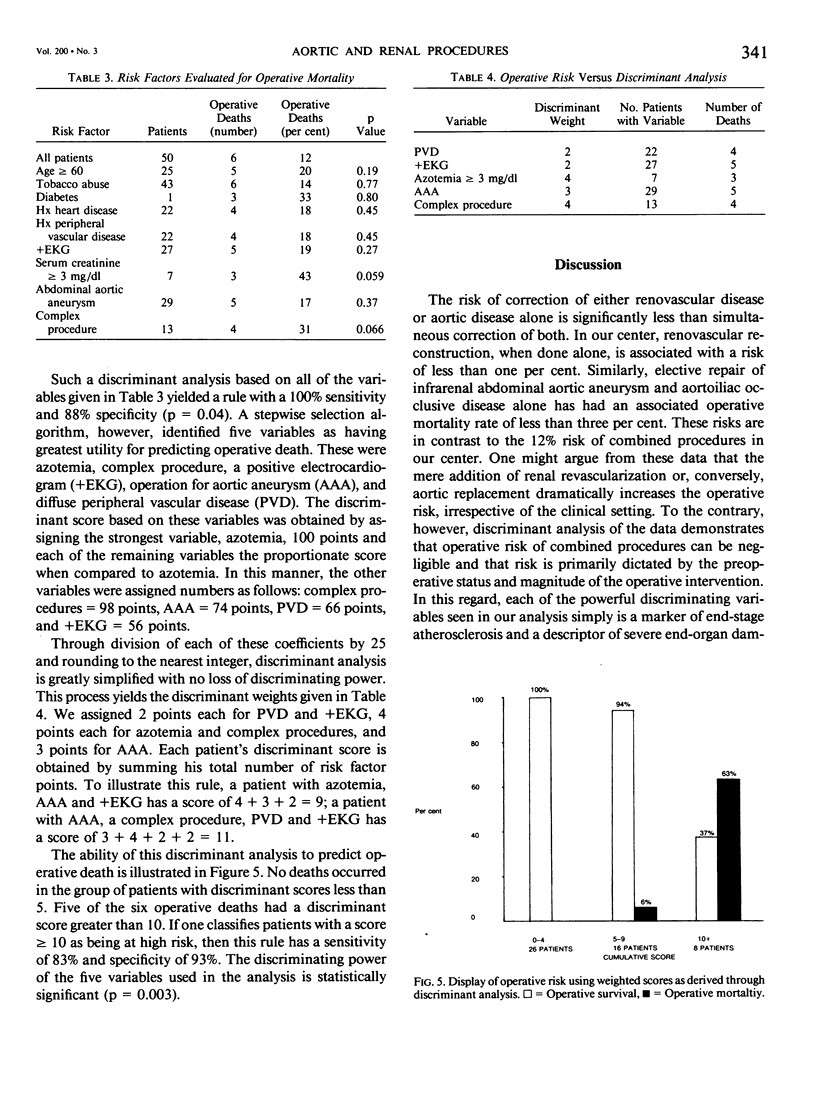
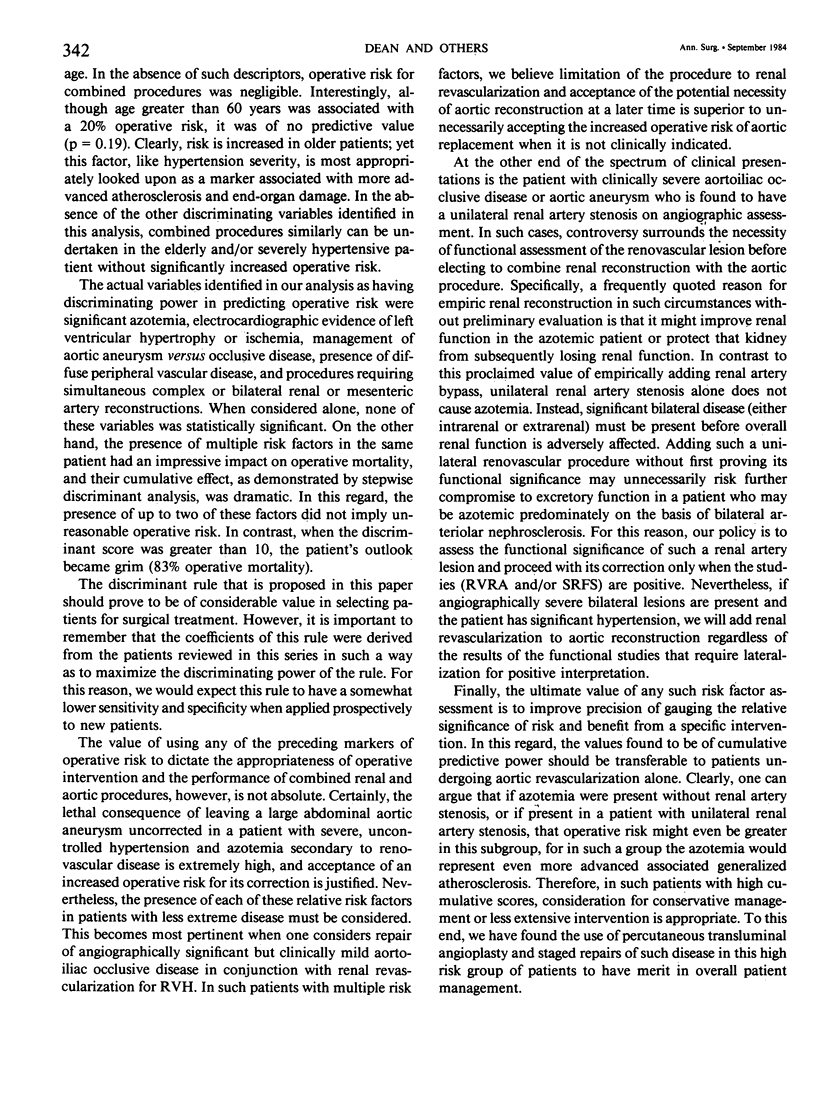

Images in this article
Selected References
These references are in PubMed. This may not be the complete list of references from this article.
- Dean R. H., Foster J. H. Criteria for the diagnosis of renovascular hypertension. Surgery. 1973 Dec;74(6):926–930. [PubMed] [Google Scholar]



